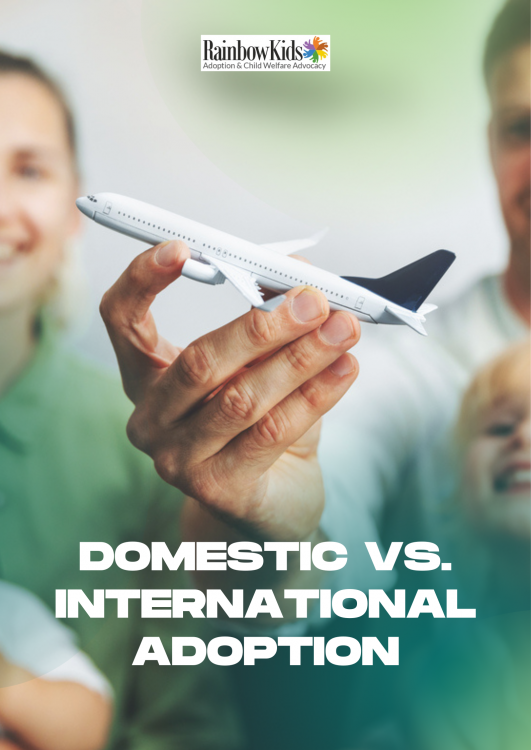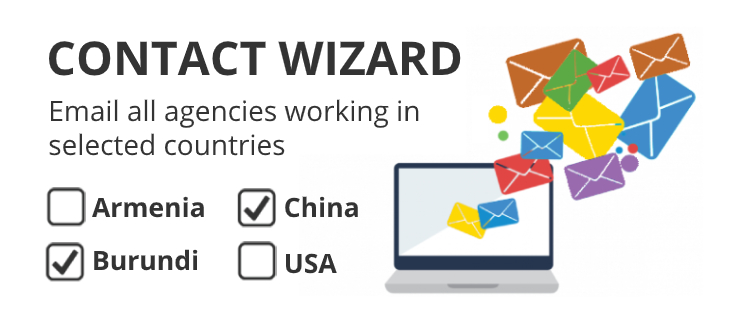
If you’re just starting your adoption journey, deciding on whether you’re opting for domestic adoption or international adoption is the first big decision you must make. Though both can achieve your dream to grow your family it is important to understand the major differences between the two.
Putting the two processes side by side and evaluating the pros and cons should help in this journey.
- Domestic adoption:
- The adoption of a child born within the United States from a family of US citizens who legally consents to the adoption with the adoptive parent/family of their choosing.
- International adoption:
- Also referred to as intercountry adoption, is the process by which you adopt a child from a country other than your own country (i.e., anywhere besides the United States).
Differences Between Domestic and International Adoption
As with all major life decisions, one of the best ways to help you get clarity is to make a pros and cons list. We suggest you do this with both the domestic and international adoption process as well. See what you come up with!
Requirements
Requirements for domestic adoption across the United States are quite similar. Primarily, you must be of legal age, have no records of criminal behavior, and be willing to undergo other mandatory steps, including a homestudy, for the completion of the adoption process. Some adoption agencies might have more requirements. In addition, adoption agencies with religious affiliations might express their preference for adoptive parents that are part of the same faith.
For international adoption, aside from the US Department of State, the US Citizenship and Immigration Services (USCIS) and other federal and state authorities are involved. The additional requirements set by the country of the birth child must also be followed. Some countries don’t recognize some of the in-place laws in the US. For example, some countries are still not open to adoption by LGBTQ+ parents.
Research Research! Research!
Cost
Finances definitely should be considered before deciding on what type of adoption is best for you.
- Dating back to 2016, according to the Children’s Bureau, private domestic adoption ranges from $20,000 to $45,000 for an infant. This is inclusive of expenses for court and legal needs, documentation needs, homestudies, preadoption and postadoption counseling, and birth parent medical needs.
- The cost to adopt domestically is few, if any if you choose to adopt a child who is currently available for adoption in your state's foster system. We highly recommend you look into these beautiful children if you are considering domestic adoption!
- The average cost range for international adoption is $20,000-$50,000, according to FamilyEquality.org. Traveling to and from the child’s birth country can make expenses add up as well as agency fees, in-country fees, US government fees, notary fees, homestudy fees and other miscellaneous expenses. One thing to remember as your head spins with the total cost is that international adoption takes months if not years from beginning to end and you are not required to pay for the total expenses upfront. Expenses trickle in over the length of the adoption. Google "adoption fundraising ideas" and see some of the clever ways families have navigated the cost of international adoption.
Children Available
If you are looking to adopt an infant or a newborn (less than a year old), then domestic adoption might be for you. Domestic private adoption happens outside the state system. The birth mothers may choose among an agency's list of prospective parents. They’re also required to provide current records of the child’s physical health and medical history.
In terms of international adoption, most children available are toddler age and older. Many have special needs that range from mild to severe. Agencies who advocate for these children have files on hand which include photos that can be shared through secure password protected walls.
Travel
Intercountry adoption is more time-consuming than domestic adoption. For prospective adoptive parents who opt for international adoption, you are required to travel to the child’s country to complete the placement of the child. Traveling to and from might happen more than once.
For domestic adoption, adoptive parents may opt to see and get to know the adoption professionals and the child they plan to adopt more often. Travel rules vary from agency to agency and state to state. 
How Domestic and International Adoption Vary, Step by Step
Here are five steps to compare:
Step 1: Looking for an Adoption Agency
Domestic - There are a lot of adoption agencies you can contact who may serve you best in terms of domestic adoption. Look for an adoption professional who you can trust. As much as possible, you want them to provide guidance and support as you welcome your child into the family.
International - Some agencies place both domestic and internationally adopted children. Some specialize in international adoption alone. Regardless, research! You want a reputable agency that has a long track record of successful stories regarding their process.
Step 2: Completing a Homestudy Program
Domestic - A state-licensed social worker must oversee a domestic adoption’s homestudy process. Though homestudy requirements are quite similar from state to state, you may find that your state will require a homestudy checklist differently from others. So always do your research; ask the adoption professionals what you must prepare for domestic adoption.
International - Homestudies required during intercountry adoption, just like any type, have the same purpose—to ensure you’re a perfect match for the child. International adoption homestudy, as we have mentioned before, might be quite expensive for some, so always do your due diligence to make sure that your homestudy is accomplished by Hague-accredited, certified professional. Otherwise, USCIS and other federal bureaus in charge won’t recognize the homestudy results.
- Additional training - 10 hours is automatically added if you’re adopting from a Hague country.
- Orientation for special needs children - Most children adopted internationally are categorized as special needs. As much as possible, the prospective parent must be ready for this kind of commitment.
- More detailed background check on stability - Unlike in domestic adoption, if you wish to adopt internationally, you must undergo a more scrutinized review of your finances. Data on your source of income, employment, investments, retirement plans, and/or insurance are great indicators if you can adopt a child with special needs.
Step 3: Matching with the Right Child
Domestic - Adoptive families who aren’t strict about their preferences are likely to get matched sooner than others. In domestic private adoption, the birth parent/s must be oriented toward the shortlisted prospective adoptive parents. Of course, the birth parents must have a say in placing their child. An adoptive parent’s profile includes some basic information about themselves, their hobbies & interests, health history, placement plans, and their likes. This will help in selecting the adoptive family.
After profile selection, birth parents are to meet with the waiting families to help them build a foundation and even envision how the placement would be. During this time, the birth mother can also voice her concerns about the adoption and even the post-adoption phase.
International - Birth parents are not part of most adoption done internationally. After completing all the required paperwork, you may be quickly matched with a specific child ready for placement. However, this will depend on the country and the adoption agency in charge of your adoption process. Some adoption agencies offer photo listings available for viewing once you’ve been assessed as a qualified parent. Sometimes, photo listings are already available when you first sign up.
Once you’ve been informed about being matched, ask questions and make sure you have all the information you need. No prospective parent can ask too many questions! Trust us on this one!! It’s better, to be honest about your apprehensions, than to continue with an adoption process that can end in disruption or dissolution. The waiting child will, of course, want you to be ready wholeheartedly. So, here are things you should pay attention to get to know more about the child:
- Information on the child’s health and prenatal health - Some medical doctors specialize in international adoption and will review the medical information provided by the adoption agency in the child’s birth country.
- Placement history - This is important as you can prepare as a prospective parent on how you can provide for his/her emotional and mental needs. Most children placed in orphanages and institutions in other countries have been exposed to trauma or abuse.
Step 4: Receiving a Placement
Domestic -In domestic infant adoption, placement is immediately confirmed once the baby is born. Depending on the placement agreement signed, the adoptive parents may immediately hold the child in their arms and bring it to their homes upon discharge from the hospital. If the birth mother and you, the prospective parent, agreed to open adoption, you may even choose to be part of childbirth by being present in the hospital to welcome the child.
International -As soon as the prospective adoptive parents accepted the match and agreed to adopt the waiting child, the placement documents will be processed. The adoptive parents must be in the child’s country of origin for the final adoption process to begin.The child will receive an IH-3 visa.-To get state recognition and even state benefits, you must register or re-adopt your child before he/she turns 18 to protect his/her rights, depending on the state laws present.
Step 5: Finalizing your Adoption
Domestic -Most adoption agencies help adoptive parents even after the adoption process. A post-placement supervision period is required, during which a licensed social worker pays the new family visits and observes how both the parents and the child are coping. Post-placement visits are important to ensure that the adoptive parent and the adopted child are doing well. These visits are very similar to homestudy visits.
International -Your child is home! Jetlag is in the rearview mirror! To avoid any complications while you create a bond be realistic with your expectations and definitely do not put pressure or expectations on anyone in the family. Definitely keep your agency on speed dial during this process. Even though your child is home, it is your agency's priority to keep you grounded. Also, it's advisable that as soon as your adopted child comes home to arrange a medical exam with a pediatrician who specialized in adoption health.
There is so much to consider, whether you are looking close to home or traveling across the globe! Adoption is not for the faint of heart and you will experience ups and downs, regardless of the origin of your new child's birth. In the end, after you have taken the time to consider the pros and cons you will decide what is best for YOU. Several staff members at Rainbowkids have adoption experience. We can confidently say we know exactly how you feel as you start this amazing journey!






